Applied Microbiology International has paid tribute to Professor Mike Goodfellow, who died on March 8 2024 at the age of 83 following a short illness.
A world authority on Actinobacteria, he was granted numerous international awards for his significant contributions on the use of Actinobacteria in biotechnology, especially in the discovery of new drugs. He was also recognised with the naming of the bacterial genus Goodfellowiella and a number of other microbes.
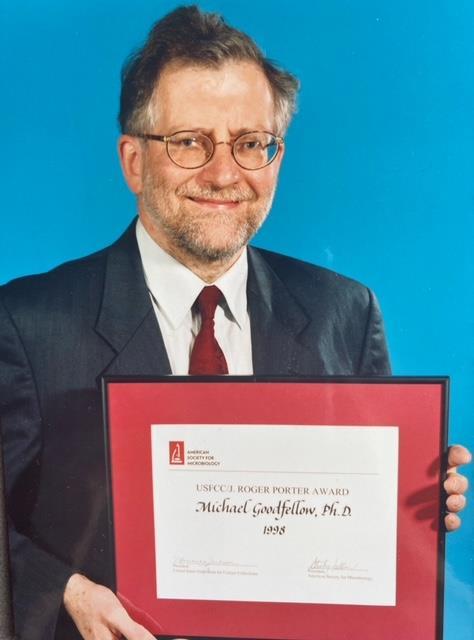
He chaired national and international organisations, including the trust that oversees the publication of Bergey’s Manual, an international resource on the classification and identification of bacteria, and was a founding member of Bergey’s International Society for Microbial Systematics. He served on the Council of the then Society for Applied Bacteriology (now Applied Microbiology International) from 1974-1979.
Sound start
Born in Ecclefechan in the Scottish borders, to working class parents Mary (née Wilson), a shirt machinist, and Edwin Goodfellow, a door-to-door salesman, Mike grew up in Carlisle. He attended Carlisle Grammar School after passing the Eleven Plus, much to his surprise. He was one of the few people in his year to continue his education, attending the University of Liverpool. He chose this institution because it was the only one he had heard of, as a pupil in the year above had gone there. This turned out to be a stroke of luck as it was in Liverpool where Mike made many lifelong friends and began his passionate support for Liverpool FC.
Mike studied botany at Liverpool and stayed on to complete his PhD, which he was awarded in 1966 for a study of ‘The classification of bacteria in a pine wood soil’, supervised by Tim Gray in the Hartley Botanical Laboratories.
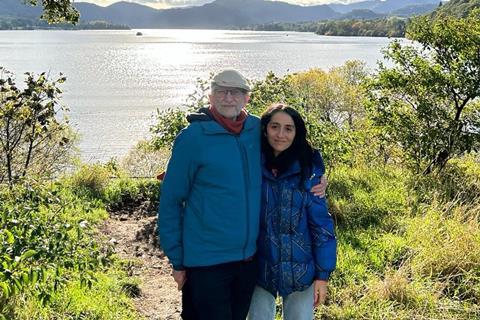
Mike began his academic career as a postdoctoral fellow at Penn State University in the US (1966-67), then fulfilled a similar role at the University of Leicester (1967-1969). In 1969 he joined the University of Newcastle as a lecturer in microbiology, and he remained there until his death. During his time at Newcastle he was promoted to senior lecturer, reader, and then professor in microbial systematics, and he headed the school of biology from 2005 until 2008. Mike played an essential role in university life; he was committed to supporting his students and colleagues in whatever capacity he could. He loved to teach and was an outstanding mentor to many young scientists.
Passion for knowledge
Mike’s passion for knowledge, along with his kindness, meant that he strongly believed that he could learn as much, if not more, from others. This mindset shaped his interactions with everyone he met. Mike spent decades forging scientific collaborations around the world, most notably in China, the Sudan, Chile and Outer Mongolia. Indicative of Mike’s warmth and enthusiasm, many of these colleagues became friends for life.
In 1983 he married Punita Tanna and they had two children, Lena and Maya.
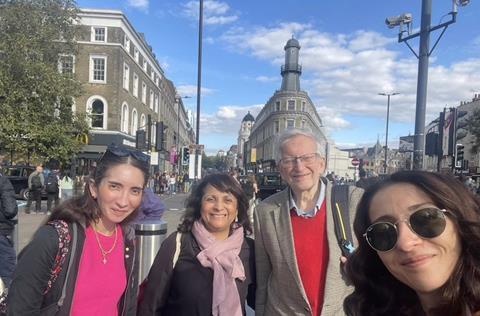
Writing in The Guardian, his daughter Lena said: “A socialist, internationalist and a deeply political thinker, he was instrumental in setting up the Socialist Environment and Resources Association and was a Labour party member from the age of 18 until he resigned his membership a few days before he died, in protest of the party’s direction of travel.
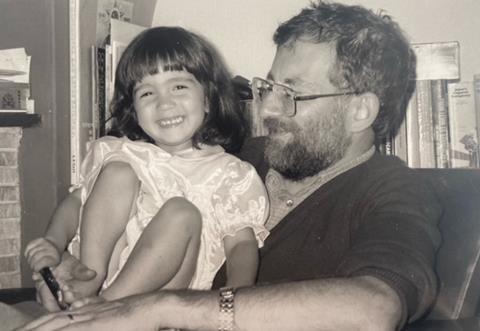
”He was a voracious reader, and even the briefest conversation with him would highlight that there were few subjects he didn’t know something about. But he wore his knowledge lightly and was always curious about the views of others.
“Staunchly opposed to private schools, he served as chair of governors at Gosforth High School for nearly 40 years.”
Systematics of actinomycetes
A major focus of Mike’s research was the systematics of the actinomycetes (now formally Actinomycetota Goodfellow 2021), and in particular the mycolic-acid containing (nocardioform) actinomycetes.
Mike and his colleagues pioneered the use of chemical analyses to identify the menaquinone, fatty acid and polar lipid compositions of bacterial cell envelopes as taxonomic characters. This ‘chemotaxonomy’ became one of the main components of the polyphasic taxonomic approach.
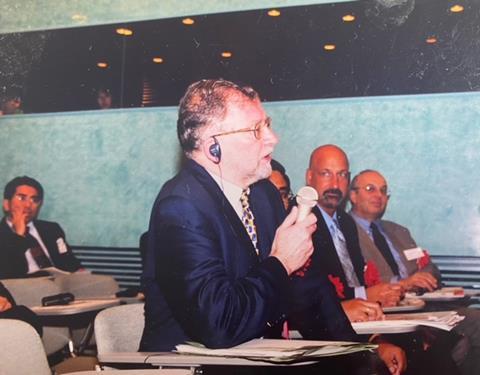
His 1984 paper published with Minnikin and others, ‘An integrated procedure for the extraction of bacterial isoprenoid quinones and polar lipids’, has been cited nearly 5,000 times. In this period, Mike also served on the Councils of the Society for Applied Bacteriology (1974–1979; now Applied Microbiology International) and the Society for General Microbiology (now Microbiology Society; 1979–1984).
Novel approach
By the 1990s, molecular methods based on 16S rRNA were becoming established for bacterial systematics and Mike was again an enthusiastic adopter of this novel approach, publishing a landmark study ‘A phylogenetic analysis of the genus Nocardia with 16S rRNA gene sequences’ with Jongsik Chun in 1996.
His experience in selective isolation procedures led to collaborations with several pharmaceutical companies interested in secondary metabolites produced by actinobacteria, resulting in a long-term collaboration with Jean-Jacques Sanglier, Head Scientist at Sandoz Pharma, now Novartis.
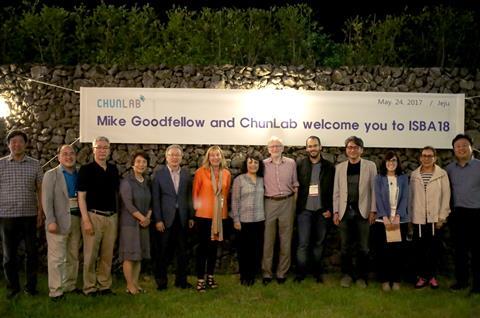
During his career, Mike published more than 500 scientific papers and scholarly articles, describing more than 200 prokaryotic species, and edited 15 books. In return, he was recognised with the naming of a genus (Goodfellowiella Labeda et al. 2008) and three species (Leptotrichia goodfellowii Eribe et al. 2004; Nocardia goodfellowii Sazak et al. 2012; Salinispora goodfellowii Román-Ponce et al. 2020).
Tribute by AMI Council member Samantha Law, NCIMB
I first met Mike at the 14th International Symposium on the Biology of Actinomycetes which was held in Newcastle way back in 2007. Being fresh faced young scientists, me and my colleague were quite shy about introducing ourselves to Professor Goodfellow. After a debate on who was going to speak to him first, which ended up being me, we finally plucked up the courage to introduce ourselves to him. Within minutes he had put us at ease by telling us he ‘didn’t like Gram negative bacteria because he wasn’t very good at doing Gram’s stains’! It was like chatting to an old friend. From that first meeting I have never known Mike to be any different - a lovely, kind soul who had time for everyone.
Since that first meeting I have stayed in contact with Mike. The subject of his emails was always ‘Newcastle calling’. Being from Newcastle it was always great to hear from him and get updates about ‘the toon’. One trip home we managed to get some fish and chips at North Shields fish quay. It was a lovely afternoon filled with Mike’s stories - a memory I will treasure.
Mike’s relationship with NCIMB dates back many, many years – in fact we have a drawer labelled ‘Freeze dried cultures for Dr Goodfellow’. Mike was a champion for culture collections and on numerous occasions has lent his support to maintain funding. I believe that NCIMB would not be here without Mike recognising the value of the culture collection. Having a culture collection has enabled us to build up a number of services, helping us to become ‘self-sufficient’.
Once described by Peter Green (former Curator of NCIMB) as the ‘Great chieftain o’ the Actinobacterial race’, Mike has been a great inspiration to countless people, not only by his scientific work but also through his warmth and kindness. Mike was an incredible man who will never be forgotten by those who were fortunate enough to have known him.
Samantha Law, NCIMB
With gratitude and deepest sympathy to the Goodfellow family.







No comments yet